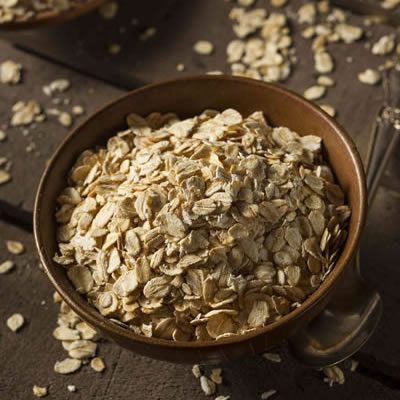
High Fiber
Also Known as Good Source of Fiber, Excellent source of Fiber, Rich in Fiber or High Fibre
What is High Fiber?
High fiber is a claim that can be made on food products when they contain 5 grams or more of fiber per serving. This claim is regulated by local food safety authorities such as the FDA in the US and the EU Commission.1
In the US, the high fiber label may be used in food products containing 20% or more of the Reference Daily Intake (RDI) or the Daily Reference Value (DRV) per reference amount customarily consumed.1
- Low fiber: food containing 5% or less of the DRV per serving
- Good source: food containing 10-19 % of the DRV per serving
The Daily Recommended Value for fiber is 25 g per day based on a 2,000 calories diet.
In the EU, high fiber claims are made following the established guidelines in EU Commission Regulation NO 1924/2006. This regulation establishes the claim that “High Fibre” can only be made or any claim that may be interpreted as such by the consumer when the food product contains 6 grams of fibre per 100 grams of product, or at least 3 grams of fibre per 100 kcal.2
Other classifications or claims around fiber in the EU are: 2
- Source of fibre: food containing at least 3 grams of fiber per 100 g or at least 1,5 grams of fiber per 100 kcal can use this term.
In the baking industry, high fiber claims are commonly used for products containing whole grains from barley, oats, rice, soya, pea, and pulses.
Origin
The development of the term High Fiber and other nutritional labeling claims began in the late 1980s. Health concerns associated with high-calorie diets increased the interest in developing guidance tools for consumers, and thus the development of nutritional claims in food products.3
In 1989, the National Research Council published the report Diet and Health: Implications for Reducing Chronic Disease Risk which emphasized the relationship between diets and chronic diseases. The publishing of this report incentivized the need for developing mandatory nutrition labels in all food products, and the eventual establishment of the daily recommended limits and “high in” and “good source” claims.3
Function
Fibre inclusion has several functions in bakery products:4
- Nutritional value-boosting.
- Increased dough water holding capacity.
- Characteristic nutty flavor when using nuts or whole grains.
- Increased dough hardness and unique textures.
- Browner and darker colored bread.
Nutrition
High fiber diets are associated with several health benefits, such as:5
- Normalization of bowel movement
- Lowering cholesterol levels
- Aiding in the control of glucose blood level
- Potentially helps with weight loss
The daily recommended value of fiber consumption is between 25 – 38 grams for people 50 or younger, and 21-30 grams for people over 51 years old. 5
Types
The most commonly used sources of fiber in baked goods are: 4
- Cereals and grains: oats, wheat, barley, rice.
- Legumes: lentils, beans, chickpeas, soybeans.
- Non-cereal: nuts, peas, apples, sugar beets.
- Hydrocolloids: hydroxypropylmethylcellulose (HPMC), cellulose, gums (guar gum, locust bean gum, xanthan gum), oligosaccharides such as polydextrose and maltodextrins.
Application
Increasing fiber content of bakery products may have several effects on dough, batter and final product functional properties, thus some consideration should be taken into account when manufacturing this type of bakery products.
Effects on dough and baked products:4
- Increased water absorption of dough during mixing
- Increased development time and decreased mixing stability
- Decreased dough extensibility
- Altered viscous and elastic moduli
- Decreased loaf volume and reduced spread ratio/height
- Increased hardness and decreased crispness
- Darker color
- Characteristic nutty flavor
Regulation
High fiber claims are regulated by the CFR Title 21 Part 101: Food Labeling.1
In the EU, high fiber claims are regulated by the EU Commission Regulation NO 1924/2006.2
References
- Food and Drug Administration (FDA). US Department of Health and Human Services. CFR Code of Federal Regulations Title 21, Part 101 Food Labeling, https://www.accessdata.fda.gov/scripts/cdrh/cfdocs/cfcfr/CFRSearch.cfm?fr=101.76 , Accessed 19 December 2021.
- European Commission (EC). Commission Regulation (EU) No 1924/2006 of the European Parliament and of the Council of 20 December 2006 on nutrition and health claims made on foods. Official Journal Of European Communities, 20 December 2006. Accessed 19 December 2021.
- Wartella, Ellen A., Alice H. Lichtenstein, and Caitlin S. Boon. “Examination of front-of-package nutrition rating systems and symbols.” Phase 1 report. Institute of Medicine (IOM) (2010).
- Cauvain, Stanley P., and Linda S. Young. Baked products: science, technology and practice. John Wiley & Sons, 2008.
- “How To Add More Fiber To Your Diet.” Mayo Clinic, 2021, https://www.mayoclinic.org/healthy-lifestyle/nutrition-and-healthy-eating/in-depth/fiber/art-20043983 . Accessed 19 December 2021.

